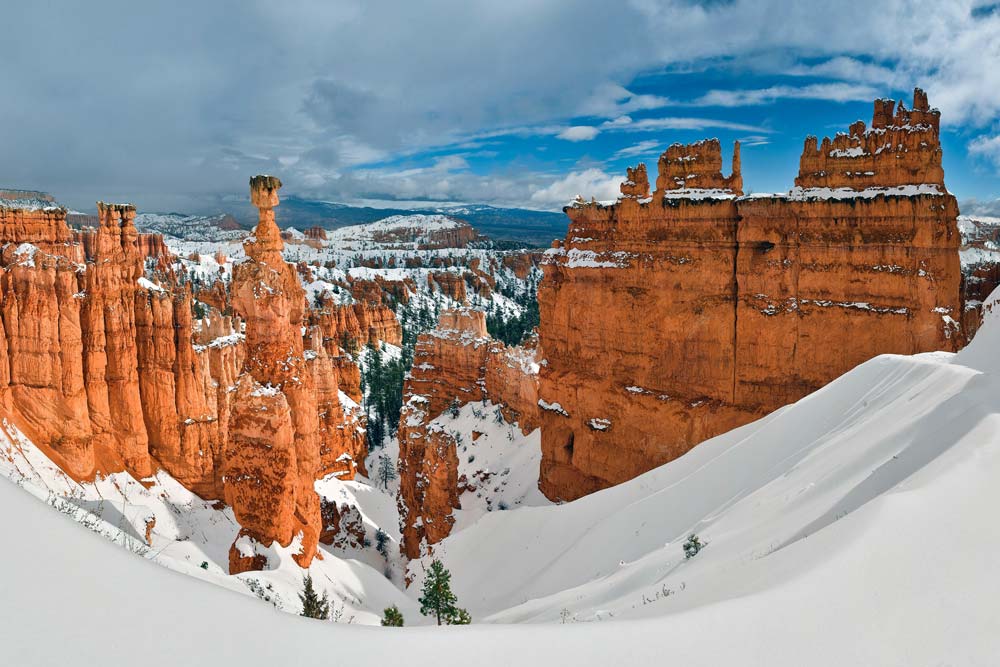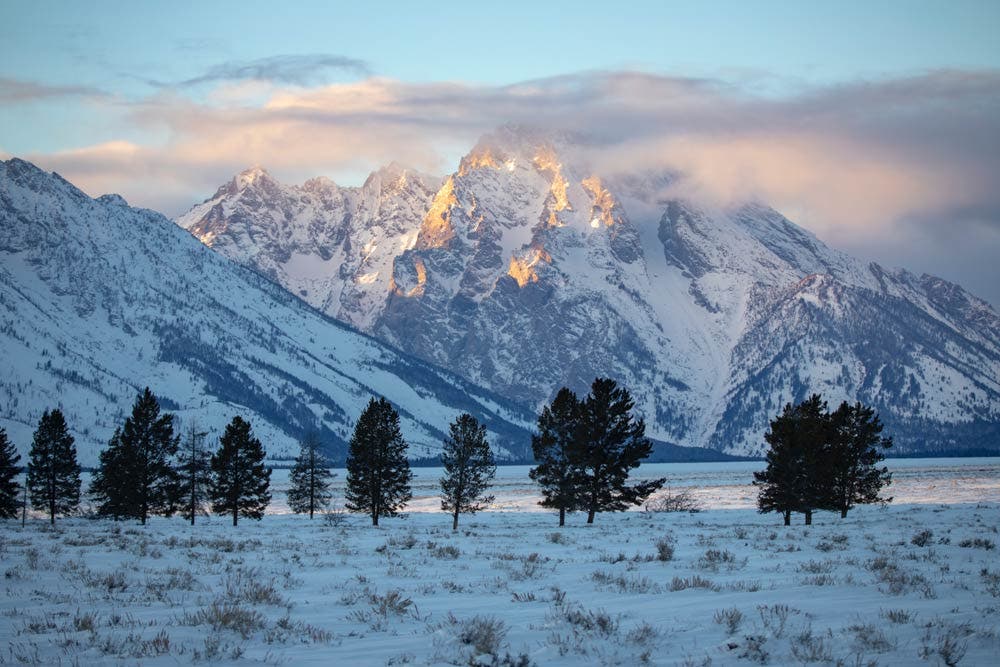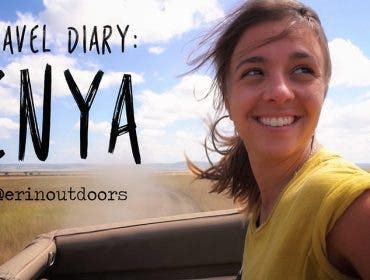Whether you like it or not, winter is coming. In fact, for most of us, it’s already here. For those of us in the Northern Hemisphere, that typically means colder temperatures and plenty of ice, sleet, and snow.
Because of that, many people tend to hang up their cameras and go into hibernation mode for the season. Few think about venturing out into the cold to photograph these incredible landscapes, and instead choose until they thaw out come springtime.
However, winter season can provide some of the most unique opportunities for photography in the outdoors. So for those photographers who love winter and don’t mind putting on extra layers to venture out for a snowy adventure, here are some of the top winter destinations for landscape photography in the United States, offering both winter accessibility and beauty that is hard to beat.

Badlands National Park, South Dakota
Badlands National Park, located in South Dakota, has bitterly cold winters and is filled with snow throughout the season. There’s nothing “southern” about South Dakota’s winters.
However, don’t let that scare you off from visiting Badlands National Park — a beautiful park on the border of South Dakota and Wyoming, which also offers beautiful, unique and extreme terrain that feels like you’ve landed on Mars. The formations there are unlike anything on earth.
But the best part about this park is that it is open and very accessible come wintertime. Barring any extreme weather, most of the famous Badlands Loop State Scenic Byway, which weaves through the park’s dramatic landscapes, remains open year-round, offering opportunities to shoot at famous points and lookouts along this beautiful byway. And if you’re lucky, you’ll get to experience these formations after a fresh layer of snow, and no crowds around.

Moab, Utah
Moab is a photo destination that is beautiful year-round, offering some of the most incredible Southwestern landscapes you will ever see.
However, in the winter, this town, popular with photographers, outdoor lovers, and thrill junkies alike, is still very much accessible and a base camp to some of the best national and state parks in the country. From the breathtaking landscapes of Canyonlands National Park and Dead Horse State Park, to the massive sandstone arches and formations of Arches National Park, you could spend months photographing this area, and not feel like you scratched the surface.
But the best part about this area in the wintertime, outside of its accessibility and close proximity to so many outdoor photo destinations, has to be when the snow hits. A fresh blanket of snow on these intricate, warm, sandstone landscapes is something to capture. So make the trek to Moab in the winter, because it’s beyond worth it.

Sedona, Arizona
Sedona is one of the most popular destinations in Arizona and the Southwestern United States, and for good reason. It’s a charming town and its incredible, colorful desert landscapes and formations are beautiful year round.
However, Sedona is just as stunning in winter, with several advantages over the summer peak season. The weather is far less hot, there are many fewer people, and if you get lucky, you could plan your trip around a snow storm that turns this desert paradise into a winter wonderland. A fresh blanketing of flurries make the famous arches and formations in the area, like Devils Bridge, far more exciting to shoot, with the sharp contrast of white, orange, and red that yields incredible photographs.

Bryce Canyon National Park, Utah
If you haven’t photographed Bryce Canyon, located in the southwest corner of Utah, you’re missing out. This national park, while small, offers one of the most beautiful and accessible natural destinations in the world.
Bryce Canyon is known for thousands of remarkable, beautiful, and colorful hoodoo formations that rise from the park’s basin floor, like pillars and spires from a long lost sandstone temple. There is simply nothing like this place on the planet, and it will leave you speechless, with incredible locations on the canyon rim for both sunrise and sunset hoodoo shots.
However, what many don’t know is that Bryce Canyon sits 9,000 feet above sea level, which means in the wintertime, it’s customary for this park to experience several feet of snow.
If you’re lucky enough to be at Bryce Canyon after a snow storm, you will be rewarded with one of the most beautiful and unexpected landscapes in the world. Bryce Canyon in winter is a photographer’s dream, and with accessibility throughout the season, it’s a must for those looking to shoot a unique and breathtaking southwest location.

Jackson Hole & Grand Teton National Park, Wyoming
This area is legendary throughout the year, but even with limited access in winter due to heavy snow, both Jackson Hole and Grand Teton National Park still offer an amazing amount of opportunity for photographers.
While the famed Park Road is closed in the winter, many of the famous Grand Teton photo locations, like Snake River Outlook, Schwabacher Landing, and Oxbox Bend, are still very accessible. And in the winter, it’s also Elk migration season, and the National Elk Refuge near Jackson fills with thousands of elk, framing a beautiful winter backdrop. It also doesn’t hurt that winter is peak season in Jackson and Jackson Hole Ski Resort, so there’s plenty to do in town and plenty of terrain to ski or board, if you need a break from shooting.

Yellowstone National Park, Wyoming/Montana
Like Grand Teton, Yellowstone’s accessibility is limited, unless you have a snowmobile or high-clearance 4×4 vehicle. However, because of its this and the rough winters, America’s first national park is normally swarming with tourists, and offers amazing opportunities to photograph the wild winter landscapes and iconic wildlife that it is known for, without the lines or crowds. Without the normal crowds, wildlife tends to be prevalent and you can catch some beautiful moments, not otherwise possible in the summer months.
After a few days in these conditions, you’ll realize just how wild this national park really is. It’s hard to beat photographing Yellowstone when the snow is falling and it’s entirely silent, without a person to be heard around you. Winter is a special season to photograph one of America’s most famous and first national parks.

Yosemite National Park, California
Last but certainly not least, is Yosemite National Park, in the northern Sierra Nevada mountains of California. Due to the incredibly heavy snowfall in this mountain range, this iconic and incredible national park turns into a winter wonderland, with snow blanketing the landscape and famous landmarks like Half Dome and El Capitan.
With the snowfall, accessibility in the high country is next to impossible in the winter season unless you have a pair of snow shoes and a whole lot of endurance. However, the legendary Yosemite Valley is still accessible throughout the winter, barring any major storms, and in the valley is where the magic happens.
There’s something incredibly special about a snow-covered Yosemite Valley, with its granite faces and formations that tower over the valley floor, and the Merced River, silent and still, casting reflections of the granite giants above. It feels like you’ve stepped into a fairytale, and because it’s off-season, you can have sections of the Valley completely to yourself as you photograph some of the best winter destinations on the planet.
Bonus: Florida’s Natural Springs, Florida
This doesn’t seem like a typical winter location, and it’s not. Florida isn’t a location that many landscape photographers flock to. It’s typically known for its commercialized and busy beaches and Walt Disney World, but many don’t realize the incredible untapped potential that lies beyond these family vacation destinations.
Florida happens to be home to some of the most breathtaking natural salt and fresh water springs in the world. Scattered throughout the Sunshine State, these natural springs offer crystal clear waters, which are fed from the pure, natural springs beneath the surface.
There are two reasons why these Florida natural springs are incredible to shoot in the winter. First, because it is winter, there are far less people at these springs because the water is colder. But that also means the waters will be calmer, so if you’re willing to brave some chillier weather — safely, of course — you could be rewarded with some fantastic opportunities for photography.
Second, winter season in Florida is also manatee season. Thousands of manatees flock to these calm, natural springs due their relative safety, underwater vegetation, and colder temperatures. It’s an incredible experience to witness these beautiful and docile creatures float through these crystal clear natural springs. So not only are these natural springs in Florida beautiful, but they offer an amazing and unique marine life experience as well.
Feature photo by Pedro Lastra on Unsplash






